Here are five more postcards from around 1913 contributed by a Streamliner Memories reader. These aren’t quite as offensive as yesterday’s. The first one even makes the chief appear able to read English, which wasn’t true for most Indian elders at that time.
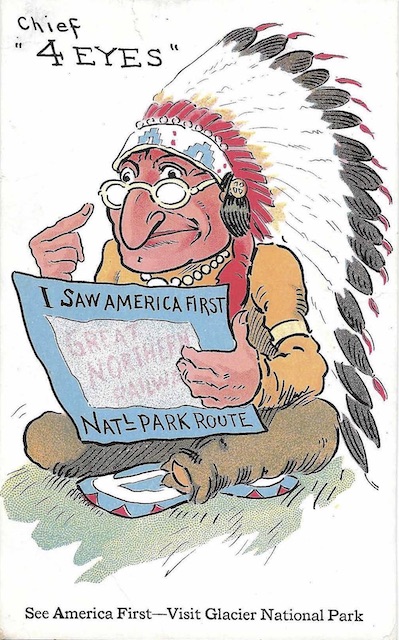 Click image to download a 292-KB PDF of this postcard.
Click image to download a 292-KB PDF of this postcard.
Great Northern passengers stopping off at Glacier National Park would be greeted by Blackfeet Indians in full regalia. Later, they might be entertained with songs, drums, and stories.
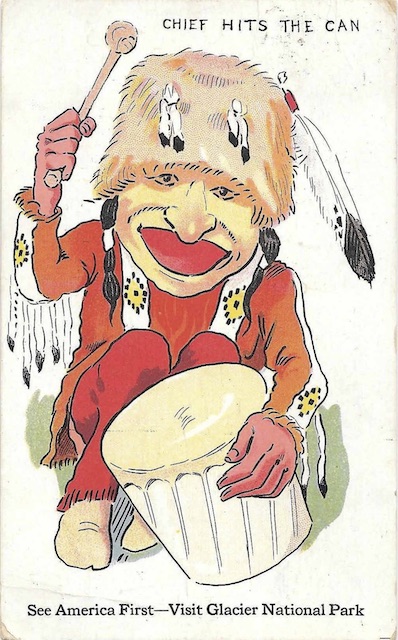 Click image to download a 248-KB PDF of this postcard.
Click image to download a 248-KB PDF of this postcard.
Among other Indian tribes, the Blackfeet were known as fierce warriors. Raiding other tribes for horses and guns was a part of their culture.
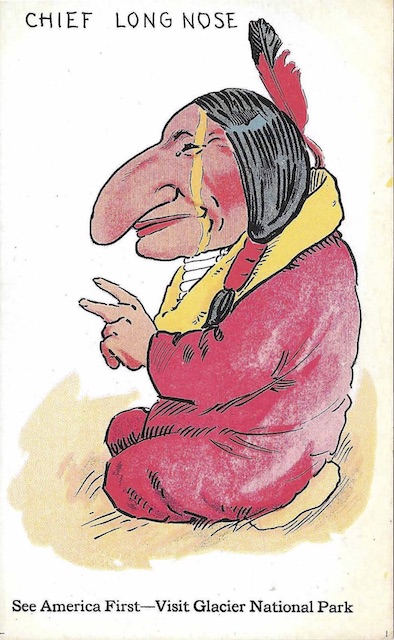 Click image to download a 248-KB PDF of this postcard.
Click image to download a 248-KB PDF of this postcard.
Lewis & Clark’s encounter with some Blackfeet Indians started peacefully but ended in violence when the Blackfeet attempted to steal some of the explorers’ horses and guns. I believe that was the only time the Lewis & Clark party resorted to killing any Indians. Later, the Blackfeet were known to be hostile to fur trappers in their domains.
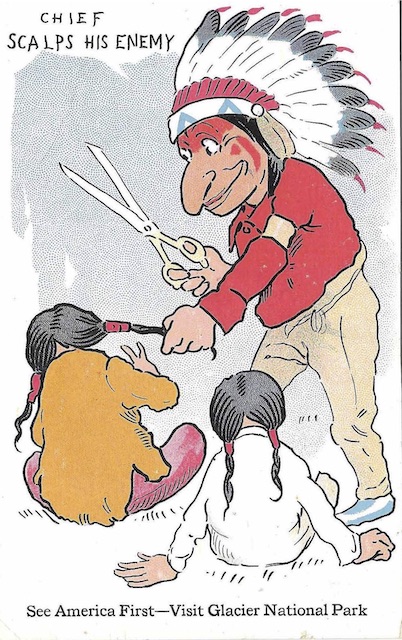 Click image to download a 318-KB PDF of this postcard.
Click image to download a 318-KB PDF of this postcard.
In 1870, an Army troop massacred a Blackfeet Indian band who were known to be peaceful and even carried with them a letter of safe conduct signed by the Indian Bureau. The Army was looking for a different band of Indians, one of whom supposedly murdered a white man. When one of the Army scouts informed the troop’s commander that they were not the hostile Indians they were looking for, the commander had the scout arrested and said, more or less, that Blackfeet were Blackfeet and ordered his men to attack. At least fifty of the 174 victims were children and ninety were women.
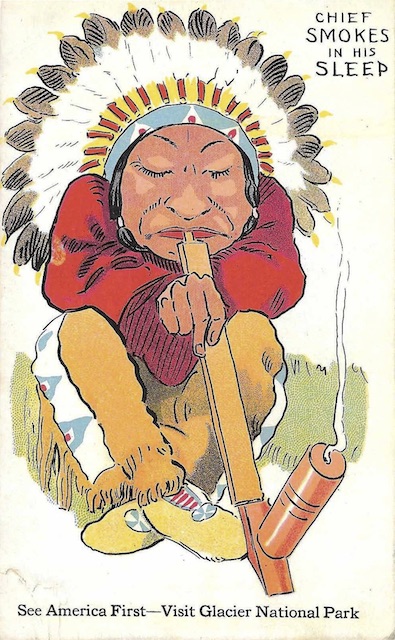 Click image to download a 300-KB PDF of this postcard.
Click image to download a 300-KB PDF of this postcard.
That would certainly make me hostile, but the Blackfeet tended to stay out of the Indian Wars after that time. They refused to join with the Sioux in their battles of 1876 and 1877 or in Canada’s Riel Rebellion of 1885, but also refused to work for the U.S. Army as scouts.
By the time the Great Northern built across Montana, the Blackfeet had settled into their reservations, though not without serious hardships especially as the Army had deliberately tried to exterminate buffalo in an effort to keep the Indians from roaming off the reservations. In light of these tragedies, the caricatures on these postcards seem mild.
